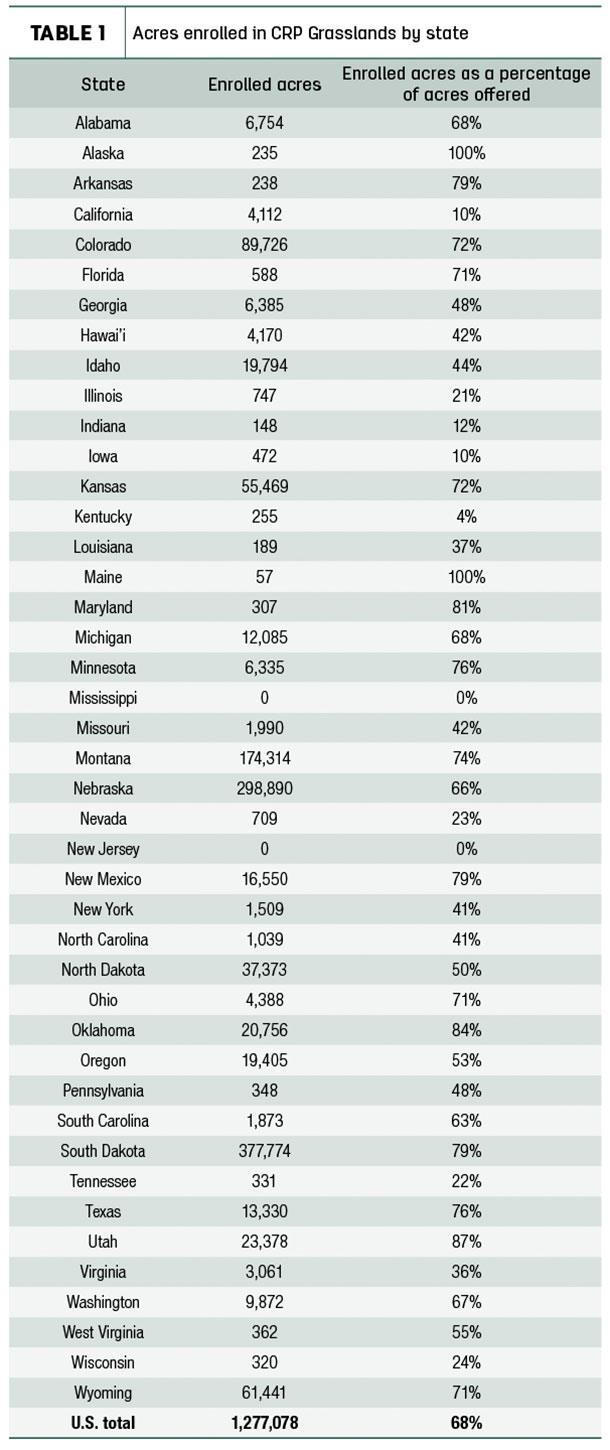While other variations of CRP support conservation by removing land from cultivation for extended periods of time – up to 15 years – CRP’s Grasslands Program is unique in that it promotes the conservation of grassland by permitting its use as grazingland. Grazing and healthy grassland ecosystems can coexist, and, in many cases, enhance one another. Well-managed grazing, especially on lands covered with native grasses, can provide healthier habitat for wildlife and can minimize invasive species. Native grass ecosystems also attract insect-eating birds which can help keep pest populations that stress livestock under control.
Land eligible for CRP Grasslands
The grassland enrollment prioritizes expiring CRP contracts, lands at risk of conversion or development, and grasslands important to wildlife and the local ecosystem. The full list of factors that FSA considers are the following:
- Existence of expiring CRP land
- Existing grassland
- Existing multispecies cover and predominance of native species
- Focus area determined by state technical committee
- Applicant is a beginning, veteran or socially disadvantaged farmer
- Existing small livestock operation
- Cost
Livestock operations can be put in place or continued when enrolled in CRP Grasslands on the condition that grassland resources are protected. This can include common grazing, haying, certain seed harvesting, controlled burns and fire mitigation strategies.
CRP Grasslands was created in the 2014 Farm Bill and was developed further in the 2018 Farm Bill when the National Sustainable Agriculture Coalition (NSAC) advocated for a provision, with the help of Senate Agriculture Committee Chair Pat Roberts to set aside no fewer than 2 million acres for CRP Grasslands. By October of 2020, with these new enrollments, the total amount of land under CRP Grasslands is expected to be 2.1 million acres. Because of this farm bill provision, this year’s sign-up period was able to exceed the last sign-up period threefold (compared to 2016 enrollments).
As with traditional CRP, FSA pays rent for the acres enrolled in CRP Grasslands, though at 75% of the standard CRP rate. This is calculated on a county-by-county basis. FSA’s rental rates by county can be found here.
This new enrollment in CRP Grasslands is impressive and is proof that there is demand across the country for this program. The greatest demand for this program was in states with large amounts of grassland and range, with the top 10 states for enrollment being in the Great Plains and Intermountain West.
The top ten states for CRP grassland enrollment for this period are:
1. South Dakota: 377,774 acres
2. Nebraska: 298,890 acres
3. Montana: 174,314 acres
4. Colorado: 89,726 acres
5. Wyoming: 61,441 acres
6. Kansas: 55,469 acres
7. North Dakota: 37,373 acres
8. Utah: 23,378 acres
9. Oklahoma: 20,756 acres
10. Idaho: 19,794 acres
Table 1 shows a list of states that were offered CRP grasslands acres. Most, but not all, states were offered acres in the program.

The offering of acres to a state does not automatically mean that number of acres will be enrolled in CRP Grasslands. Land operators must still apply for the program and meet the requirements. In fact, some states, such as Mississippi and New Jersey, did not have any land that was accepted into the program.
There continues to be great demand for working lands programs that incorporate conservation. We hope that these impressive sign-up figures encourage the USDA to maintain and strengthen programs such as CRP Grasslands that provide benefits to farmers and ranchers, while also helping to conserve our lands and waters. Because of the long contract periods and the relatively recent implementation of CRP Grasslands, we do not expect another sign-up period for several years. Please continue to monitor NSAC’s blogs page and communicate with your local FSA office about future opportunities to enroll. ![]()
This originally appeared on the National Sustainable Agriculture Coalition website, Sept. 8, 2020.









